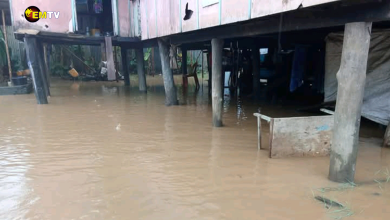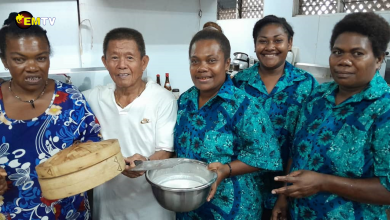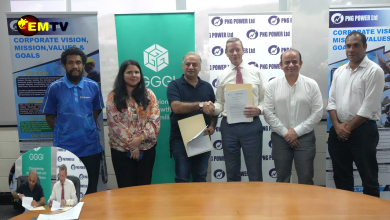News
Ramu Nico Meets Government Criteria On DSTP
Ramu NiCo has met all the government criteria and guidelines set by the Department of Environment and Conservation (DEC) for the DSTP and it is proven to be the safest, compared with other disposal options.
Gabriel Luluaki, Environment Officer from the DEC, confirmed this during the May 12-14 DSTP (Deep Sea Tailing Placement) awareness at Basamuk in the Rai Coast district of Madang province.
The awareness is in compliance with the National Court Order of July 26, 2011 that Ramu NiCo, the Independent State of Papua New Guinea, and the Director of Environment under the DEC shall conduct awareness on DSTP every quarter.
This year’s awareness covered the villages Mindre, Ganglau and Tugiak, around the Basamuk Refinery.
During the awareness, Mr. Luluaki said the National Government, through the DEC, is confident DSTP will not have any impact on the marine lives since the official production date.
Ramu NiCo Management (MCC) Ltd also confirms that DSTP is proven successful as expected, according to the preliminary report and an official report will be delivered soon after an independent consultant engaged, releases the findings.
Mr. Luluaki said that Ramu NiCo has met all the DSTP criteria including the completion of baseline study and the slope of tailing disposal at 16 degrees (DEC criteria at 12).
Ramu is gravity feed, the tailing discharge pipe at 150m (DEC criteria at more than 120m), and Vitiaz Basin is capable in containing all tailings and recent marine study confirms that no upwelling is experienced.
“This waste disposal method has been used in other mines like Lihir and has proven to be working,” Mr. Luluaki said.
He said if land based disposal was used, then high potential for impact on recreation, wild life and surface ground water would be eminent.
Meanwhile, Ramu NiCo’s significant findings have seen that there are reasonably high densities of small bottom living animals (macro fauna and meio-fauna) that live in or on the sea bed at two sites 100% covered by thin layers of tailings which indicates that the tailing solids are non-toxic to the fauna and that the animals can live in close proximity to the tailings.
This is based on a marine survey conducted last year.
The first phase was in March 2013 on fish and coral reef surveys and upwelling surveys, and phase two was in Nov 2013 covering marine water characterization, deep ocean sediment and biota (macro & meio-fauna) and subsurface plume surveys.
The final phase three was conducted in December 2013 on seabed classification. The survey was conducted by Ian Hargreaves & Associates Ltd. from Australia.
The successfully proven DSTP system is being engineered and constructed by Brass-Resan, an American-Canadian Joint Venture contractor with vast experience in engineering, procurement and construction of DSTP facilities for international resource projects.
Back to top button
Based on extensive studies conducted and the high quality engineering and construction work, Ramu NiCo is confident the DSTP provides the Project with the best option for mitigating the environmental impacts of tailing discharge.
“Under our Operational Environment Management Plan, (OEMP), we are also committed to implementing a range of rigorous monitoring programs in the operational stage to ensure we continuously meet the requirements under our Environment Permit,” Ramu NiCos’ official Sustainability Report stated.






